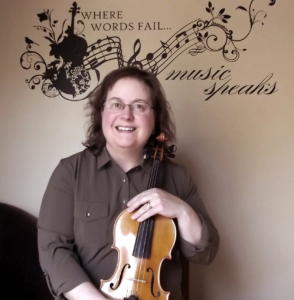
“Genius is 1 Percent Inspiration and 99 Percent Perspiration” – Thomas Edison (who maybe left out a few ingredients!)
WSMTA aspires to create more connections between students and teachers of different instrument-disciplines.
This has inspired the 2024 Conference Committee to dream up a panel discussion of teachers who have worked with chamber groups, especially groups involving pianists. Topics covered would be how to start such a program, ideas for scheduling, collaboration, and repertoire ideas.
I have been asked for input on this topic, which leads to feelings of frustration. This is not the first time chamber-collaborations have come up at the state and local levels! In my chapter, we have many vocal/instrumental students, and yet we have not been able to come up with a way to mix them together with piano students in ensembles. Why is this?
Not for a lack of interest! Perspiration is involved in just thinking this through. The roadblocks seem to be:
1) Lack of chamber repertoire written below an advanced level for all participants. Classical chamber repertoire for 3, 4 or 5 musicians that includes piano was not written for student-level players. Modern equal-difficulty student-ensemble repertoire is written for the types of student groups that make up most of the commercial market: youth/school bands, orchestras, choirs, and single-discipline studios. Therefore, any piano parts are blended into a larger ensemble, are at an advanced (teacher) level, or missing completely.
2) Lack of an organizational structure for communications and scheduling. The students who are involved in ensembles are probably in their school or community youth orchestra, band, or choir; or in small chamber groups organized by their private teacher around strings or winds repertoire. Bringing together students outside of these structures and disciplines is very difficult.
3) Lack of student availability. The very students who have developed the skills for playing chamber music at the (required) intermediate and advanced levels are usually involved in many other activities. They are studying demanding solo repertoire; defending their seating position in a competitive band or orchestra; and/or preparing for WMEA Solo and Ensemble. And of course, they are usually hard working students in college-prep classes. Do they have time to dedicate to another type of music-making that might be considered “just for fun” or “on the side”? Most would answer “No.”
All of these obstacles return us to the status quo (resignation).
Is there a way through? I would love to hear from any GENIUS teachers who have experience in this area! Maybe you got there through experimentation, innovation, or negotiation. Do you have a treasured source of student-level repertoire for piano-plus ensembles? Have you composed or arranged any music for this purpose? Please contact me with your successful ideas. At least I can share them with others. Or, perhaps a panel discussion in June 2024 is not so improbable after all!
COLLABORATION. What does it look like to you?
–Jane Melin, NCTM
WSMTA Vocal/Instrumental Chair
[email protected]